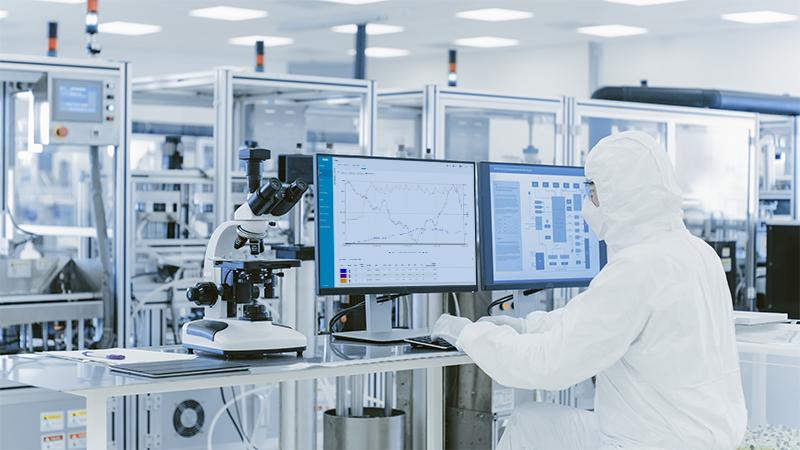A 3-part recipe for GxP monitoring system success & longevity
Recently, our application engineers met with customers to plan an installation of a new viewLinc monitoring system. The customer's current monitoring system vendor had announced the end of support for the existing system and requested that they purchase the new software and hardware. Since they were essentially being forced to purchase an entirely new system, this customer decided to look at other monitoring systems. They chose viewLinc because Vaisala is dedicated to full system support over the entire lifespan of an installation. This blog describes how we ensure the lifetime of a viewLinc system.
If you've ever used the Vaisala viewLinc continuous monitoring software, you have likely been pleasantly surprised by the usability and adaptability of the software. Over the last two decades, viewLinc has been under ongoing development to ensure that it exceeds the expectations of GxP users. If you are a long-term viewLinc user, you know that the software and its devices were also designed for adaptability.
The ability to adapt to the needs of our customers has always been a key component of the development roadmap for viewLinc. This characteristic of the system came as a direct result of listening to viewLinc users. The typical viewLinc user starts small, either with a demo provided by our sales team, or a smaller, single-application install. Typically, they expand their system. Over the years, this has led us to prioritize viewLinc's development to serve the needs of our customers as they scale up their monitoring operations. Many customers have used viewLinc as their critical application monitoring system for 20 years. This long experience has allowed us to transition with our customers through different technologies, growing together.
The viewLinc development process represents a lot of work by developers, UX designers, GxP Specialists, and of course, customer support. Along the way, we learned several lessons that have brought us to a 3-part recipe for monitoring system success:
- Ensure easy scalability
- Keep the administrative requirements low
- Maintain backwards compatibility
These three development goals ensure that we continue to support viewLinc customers, year on year. Our customers have invested in their quality by choosing the viewLinc system; we match that investment by ensuring that Vaisala devices and software are built to last.
Recipe for effective GxP climate monitoring
First, viewLinc must be scalable. This is an absolute requirement to ensure customers can easily grow their system over time. The viewLinc system architecture was designed to make it easy to add new sensors and new sites with only minimal increase in validation, infrastructure, and administration requirements. However, scalability is also a requirement for smaller installations. Not every viewLinc installation has hundreds of data loggers.
Second, administrative requirements need to be kept in check as a system grows. If you have not designed your system for growth, administrative requirements can increase as your climate monitoring system grows, with the result that a 100-sensor system might require five times the work of 20-sensor system. Instead, viewLinc uses a leveraged administration approach. This approach emphasizes the use of templates to avoid repetitive configuration work and a sophisticated security schema that can allow each site to be administered locally. High-level administrative tasks with system-wide effects are reserved for select administrators, such as corporate IT, for example.
With leveraged administration, the administrative burden does not increase with system size, so that a 100-sensor system requires only a small increase in administration compared to the 20-sensor system, even though the system is five times larger. Finally, backwards compatibility accommodates emerging technology. For example, if you purchased a Vaisala DL2000 data logger five years ago (investing in technology that has been used on the International Space Station and even on other planets), that data logger can still communicate with a monitoring system software that has undergone continuous development and improvement since the logger was purchased.
Years ago, the DL models were used with viewLinc 3.4. Today, those same data loggers can still send data to the current version of viewLinc 5.1. Those intervening years have seen technological advances in data logging technology and communication, such as our current flagship RFL100 data logger, which is capable of 100 meters of wireless communication. Although we have new technology, the older devices are still going strong.
The current version of viewLinc has evolved from a climate monitoring system that ensured compliance with 21 CFR Part 11, Annex 11, and other regulations and standards into an enterprise-level system capable of monitoring worldwide networks exceeding 4,000 dataloggers. Yet, the reliable and venerable DL-2000 still works seamlessly with viewLinc 5.2. Smaller installations still using viewLinc 3.4 system and DL2000 data loggers have an upgrade path to the latest version of the software that ensures they retain their historical data and continue to use their old data loggers.
No system left behind
We never leave a customer behind by making our newest technology incompatible with our existing technology. Vaisala builds its data loggers to last because we are dedicated to protecting our customers' investment. The continuous development of viewLinc will continue to support compatibility with older Vaisala data loggers.
Learn more about the Vaisala viewLinc Continuous Monitoring System…
The viewLinc software is globally supported and available in nine languages. Find your local contact.

Add new comment